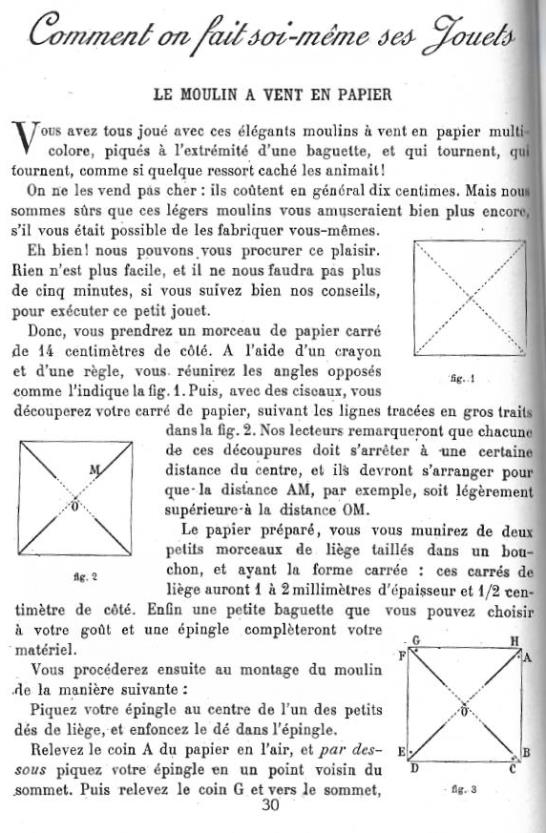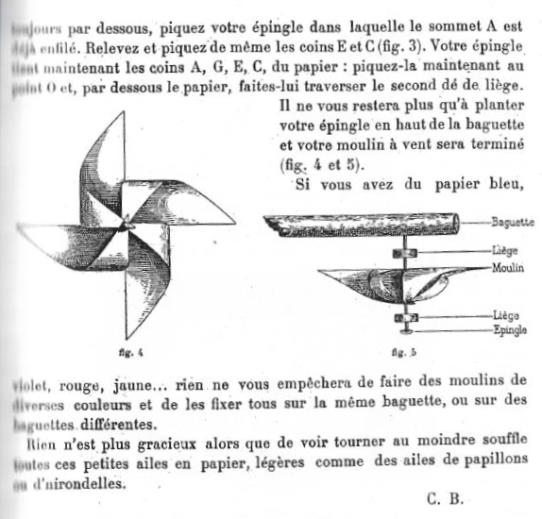| The Public Paperfolding History Project
Last updated 9/9/2025 x |
|||||||
| Paperfolding in Mon Journal | |||||||
| This
page records articles / illustrations relating to
paperfolding which appeared in Mon Journal, a French
children's magazine, between 1898 and 1912. Please
contact me if you know any of this information is
incorrect or if you have any other information that
should be added. Thank you. Undated Article I have not been able to date the following article, which appeared, without context, in a modern private publication 'Les Pliages selon Froebel et les autres'. Michel Grand has discovered a reference to this article in issue 49 of 7th September 1901, which means it must date to before October 1898, as all the issues in between these dates have been searched. Moulin a Vent en Papier / The Cut and Fold Windmill
********** Dated Articles 1894 Article by A Verley in Mon Journal of 27th January 1894 (the playing card cube) ********** 1899 Article in Mon Journal of 17th June 1899 (the kettle) Article by Alber in Mon Journal of 9th September 1899 (the coin fold) Article by Alber in Mon Journal of 21st October 1899 (the turban / the pyramidal hat / a medieval helmet) Article by Alber in Mon Journal of 18th November 1899 (the lotus) ********** 1900 Article by Alber in Mon Journal of 10th February 1900 (the bellows) Article by Alber in Mon Journal of 7th April 1900 (le kiosque Japonais) Article by Alber in Mon Journal of 11th August 1900 (the inflatable frog) Article by Alber in Mon Journal of 8th December 1900 (the cut frog-base crab) ********** 1901 Article by Alber in Mon Journal of 5th January 1901 (le bonnet carre / the kabuto) Article by Alber in Mon Journal of 4th May 1901 (the sedan chair) Article by Alber in Mon Journal of 27th July 1901 (the lily) Article by Alber in Mon Journal of 17th August 1901 (the mushikago / the dustpan) ********** 1902 Article by Alber in Mon Journal of 8th March 1902 (how to climb through a playing card) Article by Alber in Mon Journal of 24th May 1902 (the buddha papers) Article by Alber in Mon Journal of 18th October 1902 (the paper crane and the flapping bird) Article by Alber in Mon Journal of 8th November 1902 (the japanese box) ********** 1903 Article by Alber in Mon Journal of 21st February 1903 (the cocotte / the waterbomb) Article by Alber in Mon Journal of 6th June 1903 (the double boat / the portfolio / the junk box / the patisserie box) ********** 1912 Issue of 6th January 1912. Cocottes decorating a lampshade.
********** |
|||||||


